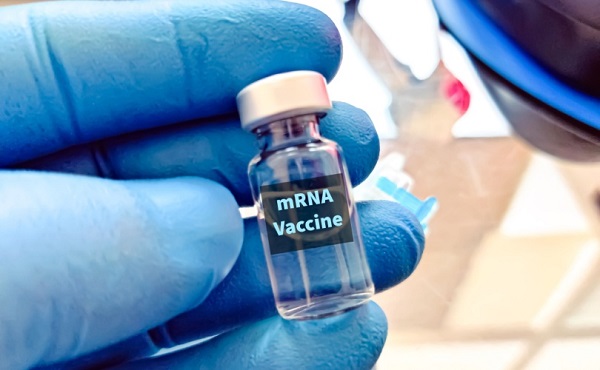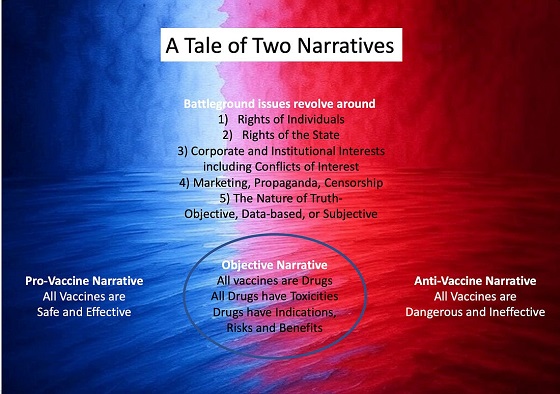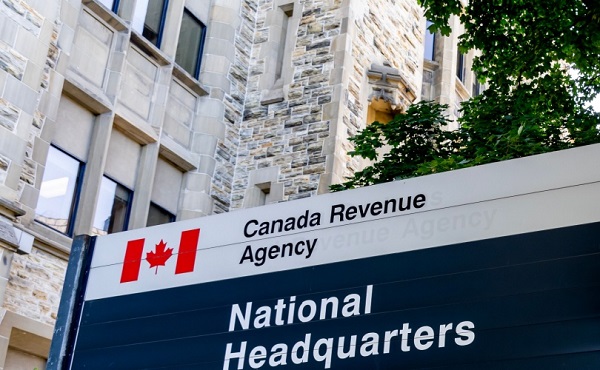Opinion
Red Deer’s A-List talks swimming but the city talks Pickleball

Alberta is forecasting to lead the country in economic growth again next year. Red Deer is expecting thus preparing for more declines in economic growth.
Alberta is expecting population growth of almost 4% next year while Red Deer talks of declining population. Blackfalds leads the country in population growth again and is also, again expanding their recreational facilities. Lethbridge with a population growth making it one of the fastest growing cities in the country is also investing in more recreational facilities.
Red Deer’s A-list came out and interesting enough the number one activity mentioned was swimming and the city is talking about delaying building the Aquatic Centre for another 4 years for finishing in 2025. The A-list also says the favourite location is the Collicutt Centre, located in the south-east corner of the city, the city wants to just replace the downtown pool with it’s inherent traffic and parking problems which would only be multiplied with hoped for population growth.
Red Deer A-list stresses swimming, the city should be facilitating an accelerated expansion of swimming pools but they are delaying the construction of another pool for another 30 years. Fear not remember the city is spending a million on pickle ball courts.
The city hopes to attract 25,000 new residents north of Hwy 11a in the north-west corner of the city. No plans for a swimming pool, they can travel downtown exasperating traffic and parking issues or travel to the Collicutt Centre in the south-east corner of the city which is the preferred choice of the 60% of the city’s recreational population.
Why not, as there will not be any high schools north of the river, anyways, with 5 high schools built and planned for east of 30th Avenue, just beside or down the road from the Collicutt Centre.
2023 will be a pivotal year in Red Deer. Red Deer will be reduced to having only 3 pools.
Collicutt Centre will be celebrating it’s 22 anniversary just as the shovels hit the dirt on a proposed replacement Multi-plex Aquatic Centre.
2001 the Collicutt opened it’s doors for the first time. Red Deer’s population was a hefty 68,308 residents.
1991 Mayor McGhee and council decided it was prudent for Red Deer to have a fourth recreational complex. The population was 58,252 residents and a recreational centre for every 15,000 was the established goal.
2001 Red Deer’s fourth recreational centre opened to a population ratio of a recreational centre for every 17,077 residents. Already behind the target.
There was, as recently as last year that the ratio of 1 indoor ice rink per 15,000 was established as determined for recreational complexes. With that in mind we should have built a new recreational complex with a swimming pool, in 2004 when the population was at 75,923. Giving us 5 recreation centres or 1 for every 15,000 residents as was deemed appropriate. Then again in 2010 when our population was 90,084 we should have built the 6th recreational complex.
If we followed this reasoning we should be planning on opening our 7th recreational complex because our population is 99,832 according to our last municipal census and if we were to grow at 1.2% annually we should hit 120,000 in 2021.
That did not and will not happen. The best we can hope for is a replacement Aquatic Centre to open in 2025.
The ideal goal is one for every 15,000 residents but if we build a 5th recreational complex with an indoor pool then we would have to settle for 1 for every 24,000 residents, which is better than just replacing a pool, as currently planned.
A fifth recreational complex north of hwy 11a would service the residents, expand tourism and kick start development north of 11a.
The current thinking is the city will tear down the downtown recreation centre and build the aquatic centre there. Leaving us with only 4 or 1 recreational complex for every 30,000 residents.
Instead of 7 we would be left with 4 for another 25 years.
What do we do? Councillor Tanya Handley has declared that she cannot support building the aquatic centre downtown with poor parking but would support building it as Councillor Frank Wong has been advocating, north of 11a near Hazlett Lake to kick start development. Newcomer Councillor Michael Dawe would consider moving the aquatic centre as would another.
That gives us 4 councillors but with 8 councillors and the mayor voting on the issue in a year, we need the commitment of 5 to ensure a new pool and not just a replacement.
I am asking all councillors and the mayor to commit to building a new aquatic centre north of 11a. Why now?
The city is a bureaucracy that tends to move slowly and in precise steps. It is always too early then it’s too late. We need commitment now so the city can make the necessary adjustments when necessary. Please commit.
I was on the citizen committee that made the recommendations cited by the city. Those recommendations was made on the premise of (1)an immediate build when (2) no land was available for a new aquatic centre. There is now a delayed construction start and there is lots of land available for a new build.
So while the province and neighbouring communities are investing in recreational facilities and reaping the rewards of economic and population growth why is Red Deer taking the reverse route?
I guess I will learn to play pickle ball.
2025 Federal Election
Neil Young + Carney / Freedom Bros

 Trish Wood
Trish Wood
and bad news for our actual Freedom Fighters
On the same day I confirmed my worst fears about the Crown’s intentions for Tamara and Chris — Neil Young, one of the leading freedom fighters of my generation has made an ass of himself, yet again. But first, Chris Barber confirmed last night that the Crown is seeking two years in prison for both he and Tamara.
I spoke to Chris briefly and he is stoic but concerned. Chris and his family are blue-collar working people/farmers who live on the remote prairies. The possible dismantling of this truck feels vindictive to me. Never forget Mark Carney’s Op Ed calling for the financial destruction of the protesters and their supporters.
The Crown’s position seems over-the-top and believe me, he would not being doing this without approval from people higher up the food chain. Guess who?
I haven’t been a Neil Young fan since his tantrum in 2022 in favour of vaccines. While the great Eric Clapton was speaking out over his own vaccine injury — Young was firing missiles from the safety of his compound in California at those of us demanding scrutiny of an untested shot that didn’t even work. Specifically Neil’s target was Joe Rogan.
Until this morning I’d nearly forgotten about this absurd move by Young, along with Joni Mitchell, who also erupted — from her LA mansion to weigh in on a subject she knows zilch about.
Back in BC, in the 70s, as a young musician and poet, I was inspired by Joni’s earliest music and open-tuning guitar idiosyncrasies that were both enchanting and frustrating. Neil and Joni — two humans I’d believed all my life were actual rebels showed themselves to be Big Pharma shills, captured by propaganda and The Man in ways I’d never expected. I always believed Neil, whom I took my son to see on his sixteenth birthday — with Oasis — what a show — was perhaps the one person from my era who would remain eternally cool. But to quote my mother — we can’t have anything nice.
Here is the world-salad, fact-free, non-granular statement from Neil Young endorsing Mark Carney. It could have been written by Meghan Markle.
The full statement was not without a warning about Terrible Trump — as if Young has drunk every bit of Liberal-talking-point Kool-Aid down to the last drop.
So now, here we are again. Canada is facing threats to its very existence, incredibly from people we thought were our friends. They want our resources, they want our land, they want our fisheries, they want our water, they want our Arctic, maybe they want our souls. I know the US president could use a soul.
It takes more than bravado to fight this kind of a threat. It takes brains, deep economic knowledge of how the world works, it takes strong, intelligent strategies, and the ability to recognize and seize opportunities both at home and on the world stage, opportunities that can bring a new level of prosperity and safety to people…..people who right now may be paralyzed with fear as they look to the future of Canada and the world.
The PEACE sign-off was at best, ironic. Mark Carney is the very emblem of a globo/cap, bellicose, anti-human, pro-censorship agenda.
Carney thanked Neil in an X post for his support, invoking off course “Keep on Rockin’ in the Free World” — an anthem that represents the opposite of Carney’s plans for the country. We are not free now and will be less so should Neil’s current man-crush make it through. Carney is already hinting at more censorship.
The clip below captures how far political discourse in this country has fallen. Watch Carney ginning up more Trump hatred and fear on a day it looks like the polls are turning against the Liberals over Button Gate and his tepid response to the fraud committed by his campaign staff.
When in doubt, trot Trump out.
Something something Trump. Something something 51st state. Something Something – I will save you.
Hey, Neil and Mark — this is what Rockin’ in the Free World looks like in Canada today.
We were bound to end up here.
Former Yippie and activist Jerry Rubin started the trend when he tossed his beliefs to become a stock broker.
Sometime in the mid-1970s, Rubin reinvented himself as a businessman. Friend and fellow Yippie Stew Albert claimed Rubin’s new ambition was giving capitalists a social consciousness. In 1980 he began a new career on Wall Street as stockbroker with the brokerage firm John Muir & Co. “I know that I can be more effective today wearing a suit and tie and working on Wall Street than I can be dancing outside the walls of power,”[8] he said.
Maybe Rubin was correct. Those of us who “dance outside the walls of power” have none. Our current “banker” whose policies will condemn the working class to globalist feudalism is considered our saviour while Lich/Barber are facing prison for peaceful protests that actually saved lives.
Moral inversion. Legal inversion. Hold tight to your beliefs and the goodness in your hearts. There’s a possibility the judge will stay a prison sentence. But we must prepare for a bad outcome. I don’t even know how to think about it right now. It is indeed unthinkable.
What’s even worse is that people in this country will cheer, including our current and previous prime ministers.
Maxime Bernier confirmed to me last night that he is being interviewed by Tucker Carlson. This gives me some hope.
Live not by Lies….nurture this thought.
Stay critical.
#truthovertribe
Trish Wood is Critical is a reader-supported publication.
To receive new posts and support my work, consider becoming a free or paid subscriber.
Autism
RFK Jr. Exposes a Chilling New Autism Reality

 The Vigilant Fox
The Vigilant Fox
Autism rates are exploding. The “experts” say they’re clueless. But Kennedy believes he knows exactly where to look.
HHS Secretary RFK Jr. just held a press conference to respond to the CDC’s latest numbers on autism rates in the United States.
The findings were impossible to ignore, and Kennedy didn’t sugarcoat just how dire the situation had become.
He revealed that 1 in 31 American children are now diagnosed with autism.
For boys, the numbers are even worse—1 in 20.
And in California, where data tracking is considered the most thorough in the country, the rate may be as high as 1 in 12.5 boys. According to Kennedy, that figure likely reflects a national trend.
Just two years ago, the national rate was 1 in 36. Now, it’s jumped dramatically—and Kennedy says he’s determined to find out why.
“The ASD prevalence rate in 8-year-olds is now 1 in 31. Shocking. There is an extreme risk for boys. Overall, the risk for boys of getting an autism diagnosis in this country is now 1 in 20.
“And as high in California, which has the best data collection.
“So it probably also reflects the national trend—1 in 12.5 boys. This is part of an unrelenting upward trend. The prevalence two years ago was 1 in 36,” Kennedy lamented.
He didn’t hold back in calling out the media and powerful industries, accusing them of covering up environmental factors that are contributing to the crisis.
Kennedy blasted the “epidemic denialists,” pointing to a 1992 ADDM report as proof that autism rates have exploded nearly fivefold in just three decades. Back then, the rate was 1 in 150. Today, it’s 1 in 31.
“It’s clear that the rates are real,” Kennedy stressed.
“Year by year there is a steady, relentless increase. I want it because this epidemic denial has become a feature in the mainstream media and it’s based on an industry canard.
“Obviously there are people who don’t want us to look at environmental exposures,” he said.
He also took direct aim at the claim that today’s rising autism rates are simply the result of better awareness or improved diagnosis.
To prove his point, Kennedy cited a peer-reviewed 1987 study from North Dakota, where researchers attempted to identify every child in the state with a developmental disorder.
They didn’t cut corners. They analyzed medical records, confirmed diagnoses, and even conducted in-person evaluations across a population of 180,000 children. Then, they followed that same group for 12 years.
If you still believe autism rates are only rising because doctors are “getting better at diagnosing it,” Kennedy said, you’d have to believe that the original researchers somehow missed nearly all the cases—98.8 percent of them.
But that’s not what happened.
“They went back in 2000 and found that they had missed exactly one child,” he said.
“They weren’t missing all these cases. The epidemic is real.”
Then came one of the most infuriating parts of the press conference: Kennedy revealed how autism research funding has been misdirected for years.
He said the National Institutes of Health (NIH) has pumped 10 to 20 times more money into studying genetic causes of autism than into researching environmental ones.
That, Kennedy said, is a dead end.
“This is a preventable disease. We know it’s an environmental exposure. It has to be. Genes do not cause epidemics,” he argued.
That’s why Kennedy says he’s redirecting resources toward the kind of research that’s long been neglected—into environmental factors.
“And that’s where we’re going to find the answer,” he added.
The most emotional moment came at the end, when Kennedy spoke from the heart about what this epidemic is doing to children—and to families.
“These are children who should not be suffering like this,” he said.
“These are kids who, many of them, were fully functional and regressed because of some environmental exposure into autism when they’re two years old. These are kids who will never pay taxes, they’ll never hold a job, they’ll never play baseball, they’ll never write a poem, they’ll never go out on a date.
Many of them will never use a toilet unassisted.”
“We have to recognize we are doing this to our children and we need to put an end to it,” Kennedy declared.
Thanks for reading! This post took time and care to put together, and I did my best to give this story the coverage it deserved.
If you like my work and want to support me and my family and help keep this page going strong,
the most powerful thing you can do is sign up for the email list and become a paid subscriber.
Your monthly subscription goes further than you think. Thank you so much for your support.
A little bit about me: I spent over a decade working as a licensed healthcare professional. But when the Biden administration rolled out its vaccine mandates, I couldn’t stay silent. My conscience simply wouldn’t let me.
That’s when I started this page.
Since then, I’ve shared thousands of clips featuring doctors and scientists who were brave enough to question the official COVID narrative. Along the way, we’ve reached billions of views and helped millions of people see the side of the story the government didn’t want out.
These days, I’m going even deeper—breaking down interviews with dissenting experts and revisiting forgotten science to uncover what you haven’t been told about cancer, cholesterol, fasting, sunlight, and more.
If you’re looking for clear, honest information without corporate spin, you’re in the right place. Follow me for straight-to-the-point clips and threads that challenge the narrative—featuring credible experts you rarely hear from in the mainstream.
Follow on 𝕏: @VigilantFox
Telegram: t.me/VigilantFox
Rumble: rumble.com/c/VigilantFox
Email List: vigilantfox.com
The Vigilant Fox is a reader-supported Substack publication.
To receive new posts and support my work, consider becoming a free or paid subscriber.
Invite your friends and earn rewards
-

 Bruce Dowbiggin2 days ago
Bruce Dowbiggin2 days agoIs HNIC Ready For The Winnipeg Jets To Be Canada’s Heroes?
-

 COVID-192 days ago
COVID-192 days agoCOVID virus, vaccines are driving explosion in cancer, billionaire scientist tells Tucker Carlson
-

 Dr. Robert Malone2 days ago
Dr. Robert Malone2 days agoThe West Texas Measles Outbreak as a Societal and Political Mirror
-

 illegal immigration1 day ago
illegal immigration1 day agoDespite court rulings, the Trump Administration shows no interest in helping Abrego Garcia return to the U.S.
-

 Health2 days ago
Health2 days agoHorrific and Deadly Effects of Antidepressants
-

 2025 Federal Election1 day ago
2025 Federal Election1 day agoConservative MP Leslyn Lewis warns Canadian voters of Liberal plan to penalize religious charities
-

 2025 Federal Election1 day ago
2025 Federal Election1 day agoEuthanasia is out of control in Canada, but nobody is talking about it on the campaign trail
-

 Education1 day ago
Education1 day agoSchools should focus on falling math and reading grades—not environmental activism



















